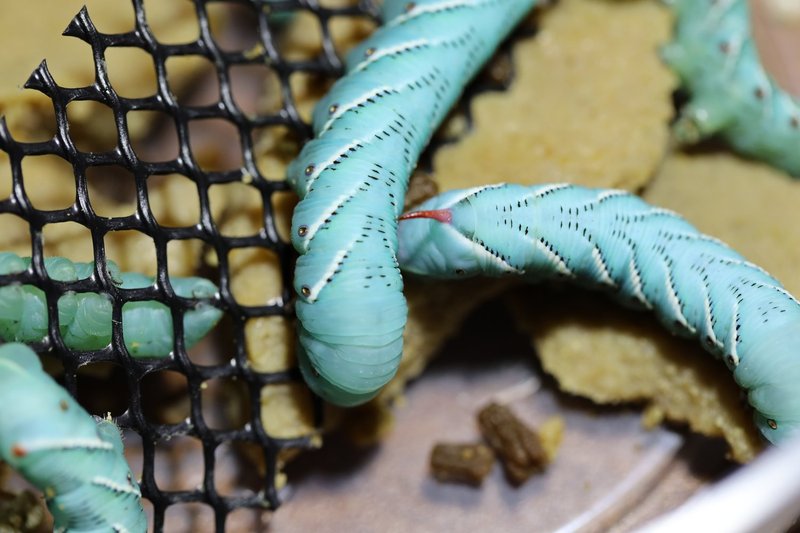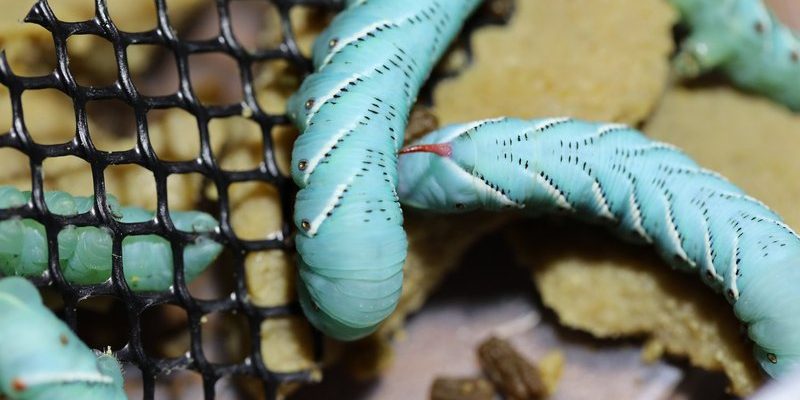
Raising hornworms can be a rewarding experience, both for you and your pets. Not only will you have a steady supply of food, but you’ll also enjoy observing these fascinating little creatures as they grow and transform. It’s like you’re running your own mini-farm, and the best part? It’s easier than you might think. So, grab a cup of coffee, sit back, and let’s explore the ins and outs of hornworm care together.
What Are Hornworms?
Hornworms, known scientifically as *Manduca sexta*, are the larval form of the five-spotted hawk moth. They start out as tiny eggs, hatch into caterpillars, and eventually emerge as beautiful moths. These caterpillars are commonly used as feeder insects because they’re packed with protein and essential nutrients, making them a great food source for many pets, especially reptiles like bearded dragons and chameleons.
You might be wondering why hornworms are such a popular choice. Here’s the thing: they grow rapidly, so you won’t be waiting around forever to harvest them. Plus, they don’t have a lot of hard exoskeleton, which makes them easier for your pets to eat. This combination of quick growth and ease of consumption is why many pet owners choose hornworms over other feeder insects like crickets or mealworms.
Setting Up a Habitat for Hornworms
Creating a suitable habitat for your hornworms is key to their growth and health. You’ll need a container that’s at least a few inches deep, as hornworms like to burrow. A plastic bin with a secure lid works well to prevent escapes. It’s important to ensure that the container is well-ventilated; hornworms produce moisture, and you don’t want their environment getting too humid.
When setting up the habitat, you can line the bottom with paper towels for easy cleaning. Hornworms also thrive best in a temperature range of 70°F to 85°F. Keep an eye on humidity levels too, as they prefer slightly humid conditions. If you notice the environment getting too dry, you can mist the habitat lightly, but be careful not to oversaturate.
Lastly, remember to keep your hornworms out of direct sunlight. They can get too hot and stressed if exposed to bright light for prolonged periods.
Feeding Your Hornworms
Now that you have the habitat sorted, let’s talk about feeding. Hornworms are voracious eaters, and their diet is primarily composed of **tobacco or tomato plants**. You can purchase commercial hornworm chow, which is a specially formulated feed that provides everything they need to grow big and strong.
You might be wondering how much to feed them. It’s simple! Just ensure they have access to food at all times. If you’re using plant leaves, make sure they’re fresh and pesticide-free. If you choose to go the commercial route, follow the package instructions on how much to provide and how often to refresh it.
To help your hornworms grow at the best rate, monitor how much they eat. If you notice they’re not devouring their food, it could be a sign of stress or poor living conditions. Adjust the habitat or diet as necessary to keep them happy.
Handling and Harvesting Hornworms
When it comes time to harvest your hornworms for feeding, you’ll want to handle them gently. Use clean hands or a pair of tweezers to avoid stressing them out. Honestly, hornworms are pretty resilient, but treating them with care will help maintain their quality as feeder insects for your pets.
If you’re raising them for a specific feeding schedule, it’s worth noting that hornworms are typically ready to feed to your pets when they are about 3-4 inches long. At this size, they’re not only nutritious but have reached the perfect point for consumption.
Another important tip: don’t harvest all your hornworms at once. Leave some in the habitat to continue growing and reproducing, ensuring a steady supply of food for the future.
Common Problems When Raising Hornworms
Even though raising hornworms is generally straightforward, problems can arise. One common issue you might face is the development of mold in the habitat, especially if it’s too humid. If you notice mold, remove any contaminated food and clean the habitat. Ensuring proper ventilation will help mitigate future mold growth.
Another potential problem is pests. Sometimes, you may find smaller pests like fruit flies or mites appearing in the container. These can usually be managed by maintaining a clean environment and ensuring that any plant matter added is pest-free.
Lastly, keep an eye out for signs of stress in your hornworms, like reduced eating or lethargy. If you notice these signs, revisit your habitat conditions. It might be too hot, too cold, or too dry, and adjusting these elements could help bring your hornworms back to a healthy state.
Why You Should Consider Raising Hornworms
Raising hornworms isn’t just about providing food for your pets; it’s also about learning and engaging with nature. Watching them grow and morph into beautiful moths can be an educational experience for kids and adults alike. Plus, you’re contributing to a more sustainable way of feeding your pets, which can be a fulfilling endeavor.
If you’re looking for a feeder insect that’s easy to care for and nutritious, hornworms might just be the answer. The satisfaction of nurturing these little creatures can be incredibly rewarding, especially when you see your pet thrive on them.
Resources for Successful Hornworm Raising
To get started on your journey of raising hornworms, there are plenty of resources available to help you out. Online communities, forums, and social media groups dedicated to insect raising can provide you with tips, support, and answers to any questions you might have.
Additionally, consider investing in a good hornworm care book or guide, which can serve as a handy reference as you raise these interesting insects. Use reputable websites as a source to ensure you’re getting accurate information, and don’t hesitate to reach out to other hornworm enthusiasts for advice.
Raising hornworms as feeder insects is not just a project but a delightful experience that can enhance the lives of your pets and add a bit of nature to your daily routine. With proper care, a suitable habitat, and a little patience, you’ll soon have a thriving community of hornworms ready to nourish your pets. So, roll up your sleeves, dive in, and enjoy the rewarding adventure of raising these unique insects. Happy raising!

